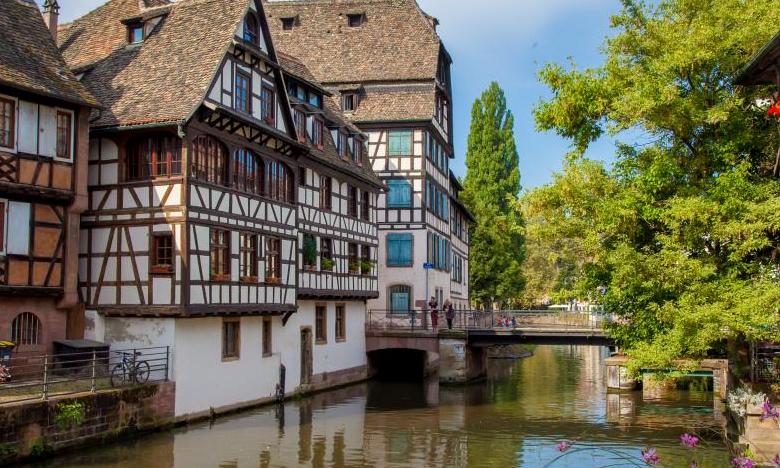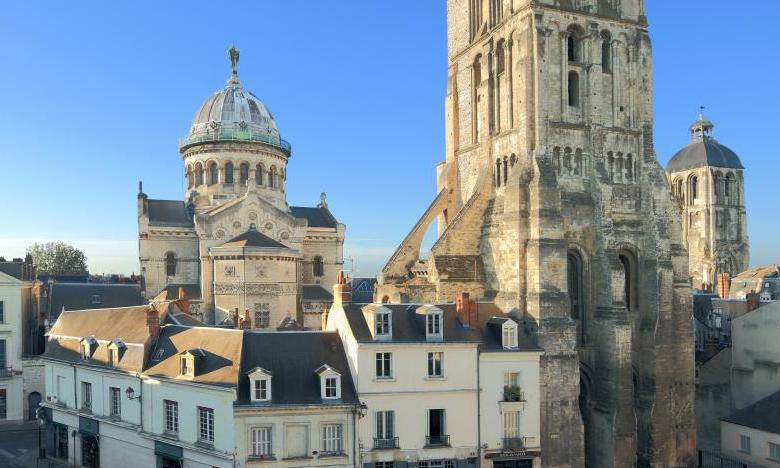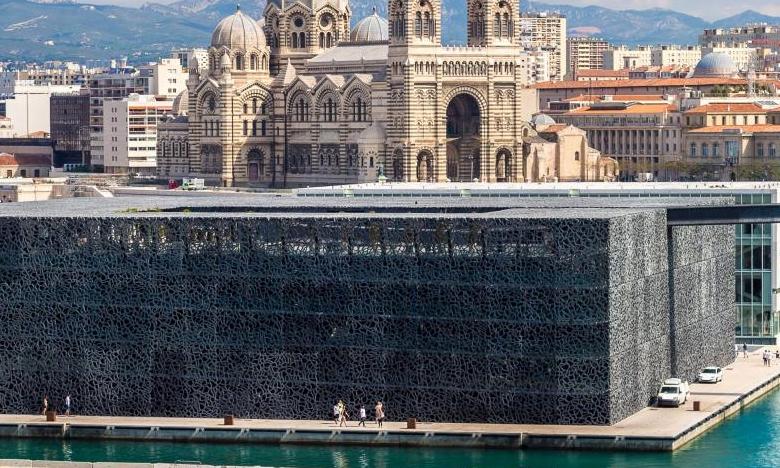In 1975, the United Nations Educational, Scientific and Cultural Organization (UNESCO) began compiling a World Heritage List of outstanding cultural or natural sites important to the heritage of humanity. Today, that list anchors the world's most popular cultural program, with more than 1,000 landmarks and regions in 167 counties.
France is well represented on this list – with 44 recognized World Heritage Sites and another 37 on the country's tentative list – in no small part because for centuries France has been fertile ground for architectural innovation. Gothic, renaissance, baroque, neoclassical, art nouveau and art deco designers have assertively put their ideas into practice and made lasting impressions on dozens of French landscapes and skylines.
But today's France could hardly be criticized for ignoring modern and future styles, especially in architecture and design. Over the last 10 years, the country has seen an explosion of contemporary architectural genius from some of the world's greatest structural and landscape artists, both French and international.
In fact, a solid number of World Heritage Sites in France are in or associated with places that also have modern cultural and public buildings of architectural note. Some of these are regional capitals and smaller cities that are members of a French association called Top French Cities. Here are eight of them.
ALONG THE LOIRE
The cities of Angers and Tours lie in the Loire Valley, an area listed as France's largest World Heritage Site and treasured for its cultural landscape, historic villages and towns, majestic chateaus and monuments, and cultivated lands.
Angers: Of major World Heritage note is the Château d'Angers, the largest fortress in the Loire Valley and home of the Apocalypse Tapestry, the oldest surviving French tapestry and biggest medieval tapestry ensemble in the world. Far more modern, though, but still relevant, is Terra Botanica, the first theme park in Europe devoted to plant life. Its 37 acres are packed with 275,000 plant species and activity-filled greenhouses, fields and gardens that cover six centuries of world history, botany and horticulture. There are rides and attractions too. Learn more about Angers.
Tours: Especially World Heritage-worthy is Vieux (Old) Tours, one of the best preserved medieval districts in the country, with a significant number of half-timbered buildings. In striking modern contrast is the Centre de Création Contemporaine Olivier Debré (CCCOD), the newest addition to the Loire Valley's art centers. Designed by the Aires Mateus agency, reputed for timeless, refined and minimalist structures, the CCCOD has an exterior of local white stone that blends well with the classical architecture of the attached fine art school. Learn more about Tours .
IN THE OLD TOWNS
The central old towns of cities all across France are marvelous collections of buildings; some, like Tours (above) are dominated by the architectural style of a single era. Unsurprisingly, the most outstanding old towns have been recognized as World Heritage sites, although many now also share the limelight with wondrous contemporary architecture.
Bordeaux: The exceptional 18th-century urban planning and neoclassical architecture of Bordeaux have been honored as the most extensive urban environment in the world to be inscribed as a World Heritage Site. Right in the mix, however, are striking modern museums. La Cité du Vin, which presents a unique immersive journey of discovery into wine cultures and civilizations, was designed by Anouk Legendre and Nicolas Desmazières to evokes wine’s liquid nature: "seamless roundness, intangible and sensual." A few blocks away, the white concrete Musée Mer Marine, given form by Olivier Brochet, aims to embrace the fluidity and freedom associated with a sea and maritime museum. Learn more about Bordeaux .
Nancy: In this eastern city of 18th-century refinement, it is the three large plazas – Stanislas, Alliance and Carrière – built under royal patronage between 1752 and 1756 as a harmonious and functional ensemble, that form a unique, urban World Heritage Site. But Nancy is also where Art Nouveau got its start and where 21st-century design has taken firm root. The canal-side Quai Ouest building is a standout example. The work of Anne Démians, it contains offices, a hotel and shops all wrapped in a stainless steel shell pierced by 650 oblong windows. Learn more about Nancy.
Strasbourg: The embodiment of a cross-cultural frontier city perched between France and Germany, Strasbourg is site of two historical areas – the Grande-Île (historic center) and Neustadt (new town) – whose distinct urban and architectural environments have earned World Heritage List recognition. Meanwhile, the Black Swan redevelopment is taking shape in another part of town, called the Presqu’île Malraux district. This group of three black lacquered aluminum towers, also designed by Anne Démians, includes the modern 120-room Okko Hotels Strasbourg Center. Learn more about Strasbourg.
BUILDING IN CEMENT
In the 20th century, cement was fully adopted as a building material that found its way into new artistic expression. By 2016, the architectural works of Le Corbusier, a pioneering 20th-century designer and urban planner, were added to the World Heritage List, given his masterful attempts to invent new architectural techniques for the modern world. Notably, as a young man, Le Corbusier worked in the office of Auguste Perret, whose ambitious post-war reconstruction teams created and employed new urban planning ideas and construction technology, especially reinforced concrete.
Le Havre: World War II bombs exacted a heavy toll on this Normandy city. Then, from 1945 to 1964, Perret embraced traces of the old town but used new concrete-based tools and ideas to rebuild its center. The high standards and historical importance of this work saw the cement city added as a World Heritage Site. Meanwhile, more recently, Le Havre celebrated its indelible ties to the sea by endowing its quay-side École Nationale Supérieure Maritime (National Maritime School) with architecture and metallic latticework evocative of ocean-faring vessels. Learn more about Le Havre .
Marseille: Of the 17 World Heritage-identified Le Corbusier sites found in seven countries, Marseille's is the "unité d'habitation" (housing unit), an apartment furnished in period style and located in La Cité Radieuse, a building designed by Le Corbusier in the 1950s. Much more contemporary, though, are Marseille's latest architectural boasts. Chief among them is the Musée des Civilisations de l'Europe et de la Méditerranée (MuCEM), a landmark venue designed by Rudy Ricciotti with an inner structure of steel and glass covered in a delicate ornamental skin of filigreed concrete. Not far away, in the port of La Joliette, Les Docks is the redevelopment of Marseille's historic dock warehouses as buzzing modern commercial, artistic and cultural spaces. Learn more about Marseille .
Saint-Etienne: Near Lyon in east-central France, Saint-Etienne is the only French UNESCO Creative City of Design and the second in Europe after Berlin. The area's clear devotion to design even finds application in neighboring towns like Firminy, where the Maison de la Culture is a World Heritage -recognized building designed by Le Corbusier. Back in Saint-Etienne, a recent contemporary structure is the exhibition, boutique and refreshment area at the heart of the Weiss chocolate factory. The steel and glass design makes it a light, airy and welcoming showroom. Learn more about Saint-Etienne .
About Top French Cities – www.francepresskit.com Top French Cities is an association of 29 cities, from regional capitals like Bordeaux to important towns like Avignon and Versailles. They are perfect for young travelers, families and anyone else looking for fun and authentic French experiences that will fit their budget. Most of these cities are university towns with a youthful atmosphere, but all of them reflect the heritage and distinctive flavors of the regions to which they belong. Many are forward-looking too, with historic buildings repurposed to house contemporary art and activity centers like Les Docks in Marseille. Many have created or integrated new, modern museums to contrast with their classical, architectural heritage, like in Nimes, where the cutting-edge Museum of Roman Civilization (Musée de la Romanité) is located across from the historic Roman amphitheater, or in Nantes, where whimsical mechanical creatures are being created, or in the UNESCO World Heritage Site concrete city of Le Havre.




